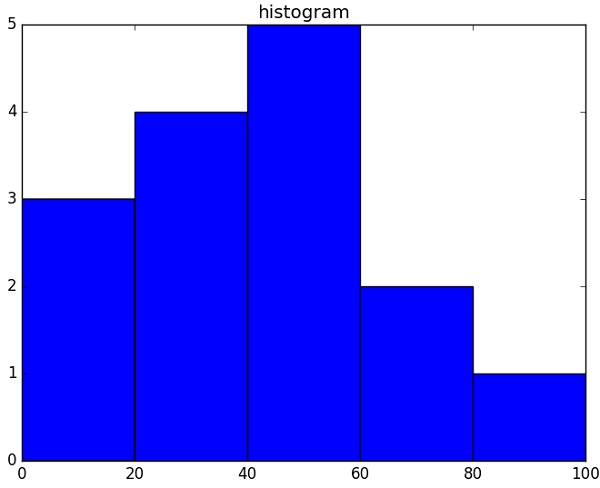NumPy has a numpy.histogram() function that is a graphical
representation of the frequency distribution of data. Rectangles of
equal horizontal size corresponding to class interval called bin and variable height corresponding to frequency.

numpy.histogram()
The numpy.histogram() function takes the input array and bins as two parameters. The successive elements in bin array act as the boundary of each bin.import numpy as np a = np.array([22,87,5,43,56,73,55,54,11,20,51,5,79,31,27]) np.histogram(a,bins = [0,20,40,60,80,100]) hist,bins = np.histogram(a,bins = [0,20,40,60,80,100]) print hist print binsIt will produce the following output −
[3 4 5 2 1] [0 20 40 60 80 100]
plt()
Matplotlib can convert this numeric representation of histogram into a graph. The plt() function of pyplot submodule takes the array containing the data and bin array as parameters and converts into a histogram.from matplotlib import pyplot as plt import numpy as np a = np.array([22,87,5,43,56,73,55,54,11,20,51,5,79,31,27]) plt.hist(a, bins = [0,20,40,60,80,100]) plt.title("histogram") plt.show()It should produce the following output −


No comments:
Post a Comment